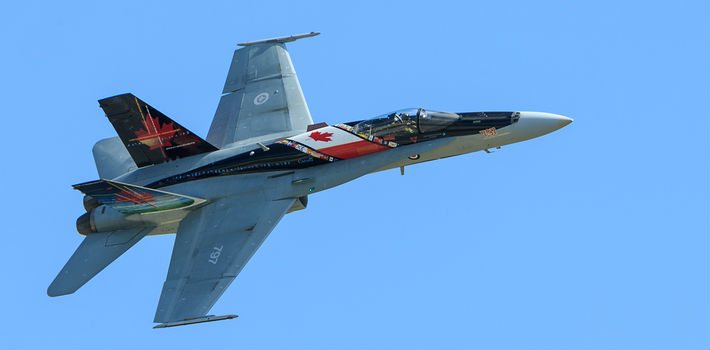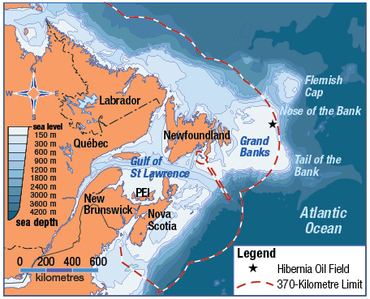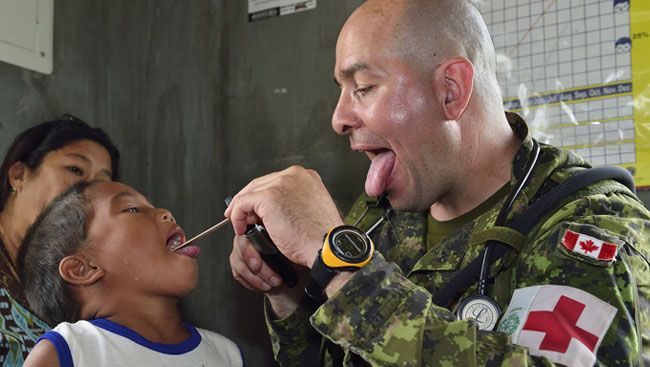U3L2 Foreign Policy and Internationalism
| Site: | MoodleHUB.ca 🍁 |
| Course: | Social 20-1 RVS |
| Book: | U3L2 Foreign Policy and Internationalism |
| Printed by: | Guest user |
| Date: | Friday, 26 December 2025, 9:35 AM |
Description
U3L2
Introduction
Key Issue
To what extent can foreign policy promote internationalism?
Questions to consider when studying foreign policy and internationalism:
How do countries set foreign policy?
|
Dictatorships vs. Democracies |
How much does the public influence the Canadian government's foreign policy decisions? Do ordinary voters have enough information to make judgements about foreign policy decisions? Should multilateral corporations have any say in a country's foreign policy? |
In countries with dictators, setting foreign policy is relatively easy because they can make decisions without consulting the people.
With democracies, setting foreign policy is a more complex process that must reflect the beliefs, values and goals of the country's citizens.
Clear foreign policy goals help guide the actions of the government. In 1995, foreign affairs and international trade Canada published a review of the Canadian foreign policy. This report highlighted the importance of setting goals that reflect the values of a country's citizens. It said, "only states with clear objectives, acting on a strong domestic consensus, will be able to deploy significant influence and play an effective role in this new world."
How can states promote internationalism through foreign policy?
| Promoting Peace Peacekeeping and Internationalism International Law and Agreements Foreign Aid and Internationalism |
Should the United Nations have its own permanent army that could be used for peacekeeping and peacemaking? Do competing claims to Arctic sovereignty illustrate the success or failure of internationalism? Should donor countries place restrictions on the way foreign aid money is spent? |
Internationalism is the doctrine (belief) that all members of the global community accept responsibility for challenges that face the world and that the motives of nations must be represented in search of solutions.
Canada signed the Kyoto Protocol, an international agreement to reduce green house gases (a major factor in climate change), but in 2006, Prime Minister Steven Harper backed away and favored the 'made-in-Canada' plan.
Countries can use foreign policies to promote internationalism through peacekeeping, international law and foreign aid.
How does Canadian foreign policy try to balance national interest and internationalism?
| Canada and Peacekeeping Myth or Reality? Trade Priorities The Ottawa Treaty |
Does Canada's position on landmines strike a balance between national interest and internationalism? In a globalizing world, should national interest be the focus of foreign policy? |
Like other countries, Canada tries to develop foreign policy that balances the national interest and internationalism. Building strong relationships with other countries is important, but promoting the interests of Canadian citizens is just as important.
Canadians, and other countries, promote and encourage world peace because peace is what everyone wants; and, it coincides with economic stability.
In 1990 the U.N. imposed economic sanctions on Iraq, the goal was to force dictator Saddam Hussein to cooperate with the U.N. but some believed they were making Iraq uncomfortable and hoping for a rebellion, and excuse to take Hussein out of power.
Canada and other countries sent peace keepers in to try to protect people involved in humanitarian efforts and to carry out agreements reached with the U.N.
Like other countries, Canada tries to develop foreign policy that balances the national interest and internationalism. Building strong relationships with other countries is important, but striking a balance between national interests and internationalism can be difficult. Events such as the September 11, 2001 attaks on the US can change the world unexpectedly.
 |
TERMS economic sanctions collective security gross national income tied aid |
Lesson
![]() RESOURCES
RESOURCES
Read and refer to Chapter Ten as your resource for completing this lesson's assignment.
How do Countries Set Foreign Policy?
How do Countries set Foreign Policy? PDF
![]() LESSON
LESSON
People living in communities elect leaders, set goals, make and obey laws, settle disputes, and find ways to live together in peace.
Nations make decisions about how they will live in the world with other countries. These decisions may include whether they will enter into bilateral or multilateral agreements and treaties, as well as how they will try to settle disputes with other countries.
How countries decide to deal with other countries is a part of a country’s foreign policy. Although politicians, diplomats, and experts in foreign relations may set and handle foreign policy, their decisions touch people’s everyday lives.
In your everyday life you will find evidence of Canada’s foreign policy in action.
Some examples are….
- Much of the food you eat come from outside the country
- Many of your clothes, shoes, and other possessions are made outside Canada.
- Several of the television shows you watch and much of the music you listen to is not Canadian-made.
- Your family income may rely on working for a company whose headquarters are in another country or whose profits rely on international sales.
- If you vacation outside Canada, the rules you must follow to gain entry to the country you have chosen are a result of foreign policy decisions.
In this lesson we will explore how countries set foreign policy, how they promote internationalism through foreign policy, and more specifically, how Canada's foreign policy tries to balance nationalism and internationalism.
Peacekeeping and Internationalism
After WW2, the Security Council (subgroup of UN) was created to help maintain international peace and security. The Security Council had the authority to investigate potential crises and respond by negotiating solutions, imposing sanctions or even asking members to launch military action.
The Security Council's main objective is peacekeeping and authorizes all UN peacekeeping missions. The UN peacekeeping process involves numerous countries to incorporate an internationalist effort to bring peace to volatile parts of the world. (Since 1956, more than 125,000 Canadians have taken part in about 50 peacekeeping missions.
Peacekeepers - sent to conflict zones to maintain peace and support humanitarian efforts after ceasefire is established. (may only use force in self defense)
Principle of Peacekeeping
Most peacekeeping missions are successful, but sometimes problems emerge and warring sides start fighting again. The Rwandan Genocide of 1994 is an example of this.
UN Peacekeeping Brochure
For more detail, click on the following link - The Rwandan Genocide explained
Peacekeeping in Rwanda

International Law and Agreements
To avoid conflicting foreign affairs policies between countries, a large body of international law and agreements has been developed. The UN's International Court of Justice (World Court) interprets and settles these disputes peacefully. Some countries, such as the US refuse to recognize this court.

UN Convention of the Law of the Seas sets out the rules for the high seas
All waters within 22 km of a country's coastline are part onf that country's territory
Countries have sole right to fishing, mining, and environment in an area up to 370 km from their coast
Foreign Aid and Internationalism
Countries also promote internationalism by delivering foreign aid for humanitarian purposes such as food, clothing, building supplies, etc. In 1969, former Canadian PM Lester B. Pearson recommended that countries spend 0.7% of their Gross National Income. At the time, UN members committed to this goal. However, in 2006, Canada gave only 0.33% of its GNI as foreign aid - about half the targeted amount.
 |
UN Chief Urges G7 to Boost Foreign Aid |
Assignment 2020
For this assignment you will need to "present" an answer to one of the options provided:
A) Choose a war since World War 2 that did not involve the UN (in any capacity, including peacekeepers)
B) Choose a peacekeeping operation since World War 2
For each option you'll need to discuss the following:
- A quick overview of the "who, why and where" of the war
- What was the international reaction to the war
- What was the outcome of the war (if you choose an ongoing one, just give the latest update)
- Your opinion, should the UN have been involved/stayed out?
- Option A) how could the United Nations involved itself in a way that would have helped more people? Remember, you can't just throw peacekeepers in a country from some unknown United Nations camp. They come from countries around the world, so other countries would have to agree to send their troops.
- Option B) Was the UN effective? Would more or less have been accomplished had they stayed out? Did they create a situation where bad things just happened later? Was it a waste of resources to send peacekeepers? Should countries have intervened with military force instead?
So when the assignment says "present" the method is entirely up to you. I imagine most people will choose to do a slide deck (PowerPoint, Sheets, etc.) but you can do whatever you'd like to do as long as you convey the information in your own words or images or you can record yourself talking about it, totally up to you. If you use an outside service (ie: Prezi) just submit a document with the link provided or share it with my email directly.
You will be assessed on:
Depth of answers /10
Connections to Foreign Policy/Internationalism /10
Your Opinion (rationale, evidence) /10
Presentation Method /5
Label it SS20U3L2.surname. In this document, enter your responses and submit this assignment using
the Assignment Folder for U3L2 Foreign Policy.